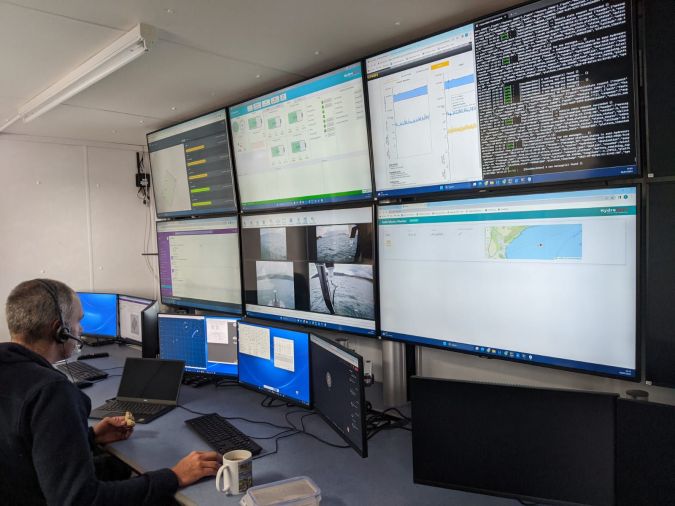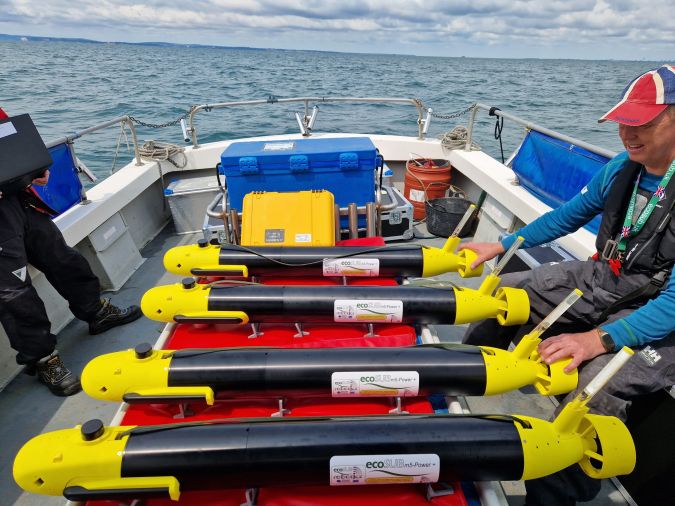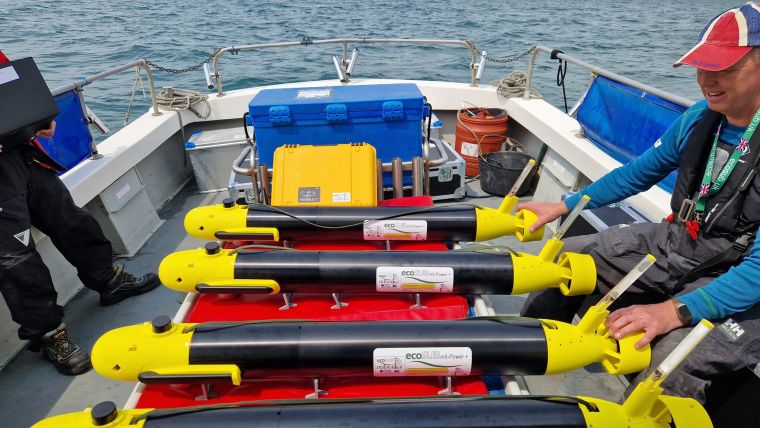Revolutionizing ocean exploration: Squads of Adaptive Robots (SoAR)
In a pioneering project funded by Innovate UK, the development of a fleet of marine robots known as Squads of Adaptive Robots (SoAR) promises to reshape the landscape of ocean exploration. The innovative SoAR initiative has already demonstrated promising achievements in enhancing underwater missions and collaborative technologies and the potential to revolutionize offshore industries.
Marine robotics are advancing rapidly, with a growing number of autonomous systems. As maritime operations become more complex and costly, and offshore energy infrastructure extends farther from the coast, there is a growing demand for sophisticated multi-platform capabilities. The Squads of Adaptive Robots (SoAR) project, a two-year research and development initiative led by ecoSUB AUVs developer Planet Ocean, began in September 2021 and concluded this summer with comprehensive testing at Smart Sound Plymouth on England’s south coast.
Tackling individual AUV limitations
SoAR aimed to surpass the limitations of individual AUVs in large-scale survey and exploration missions. Industry partners Planet Ocean, Sonardyne International and HydroSurv collaborated with the National Oceanography Centre (NOC), Royal Holloway University and Offshore Renewable Energy (ORE) Catapult. Together, they developed several technological innovations, including advanced AI-driven mission planning, open-source communication protocols for heterogeneous fleet coordination and substantial enhancements in underwater navigation and communication technology. The variety of small form factor robotic platforms involved in the project represented some of the best innovations in UK ocean robotics to date.
Open water trials successfully demonstrated coordinated missions managed in real time by an intelligent ‘autonomy engine’. Several surface and underwater autonomous systems participated, with mission control from a remote shore-based facility. The trials simulated an offshore wind farm survey mission following a comprehensive business case analysis by ORE Catapult.
The SoAR concept, adaptable to various applications, primarily addresses the specific needs of the offshore wind sector. It offers new operational paradigms and significant long-term cost savings compared to conventional methods for offshore asset construction and maintenance.

Technology highlights of the SoAR concept
- Fleet-Level Autonomy Engine: Developed by Royal Holloway, University of London, this acts as the mission’s central nervous system, making real-time decisions and replanning when necessary. The division of labour enabled by this approach promises significant productivity gains with robotics and AI.
- SoAR Communications Backbone: Developed by the NOC, this acts as a central messaging system to ensure interoperability between the autonomy engine, vehicle-specific command and control systems and other subsystems, allowing for diverse platform combinations.
- Sonardyne’s AvTrak 6 Nano transceivers provided inter-medium communications for AUVs during the trial, allowing simultaneous USBL tracking and robust telemetry for AUV-to-vessel and AUV-to-AUV communication.
- ecoSUB AUVs: These budget-friendly AUVs are equipped with advanced sensors, including high-quality sidescan sonar systems, DVL, acoustic communications and various science payloads. They played a key role in assessing the underwater environment and identifying targets of interest.
- Auto-Hover 1 (AH1): Operated by NOC, AH1 is a hover-capable AUV with exceptional precision for station-keeping and vertical navigation. It was used for close inspections of identified targets.
- HydroSurv’s REAV-60 USV: Designed for operations beyond visual line of sight (BVLoS), this versatile USV caters to various offshore survey and inspection needs, aligning with regulatory requirements.
- Sonardyne’s REAV-60 USV Decibel served as a critical communications gateway to the AUV swarm, equipped with an HPT 3000 transceiver and running their Ranger-2 software. It also utilized various communication systems, including 4G/LTE and Iridium satellite, to facilitate communication between subsea, surface and the autonomy engine.
SoAR received funding from the Next Generation Subsea Technologies competition, a joint initiative supported by Innovate UK, the Net Zero Technology Centre and the Royal Navy.















